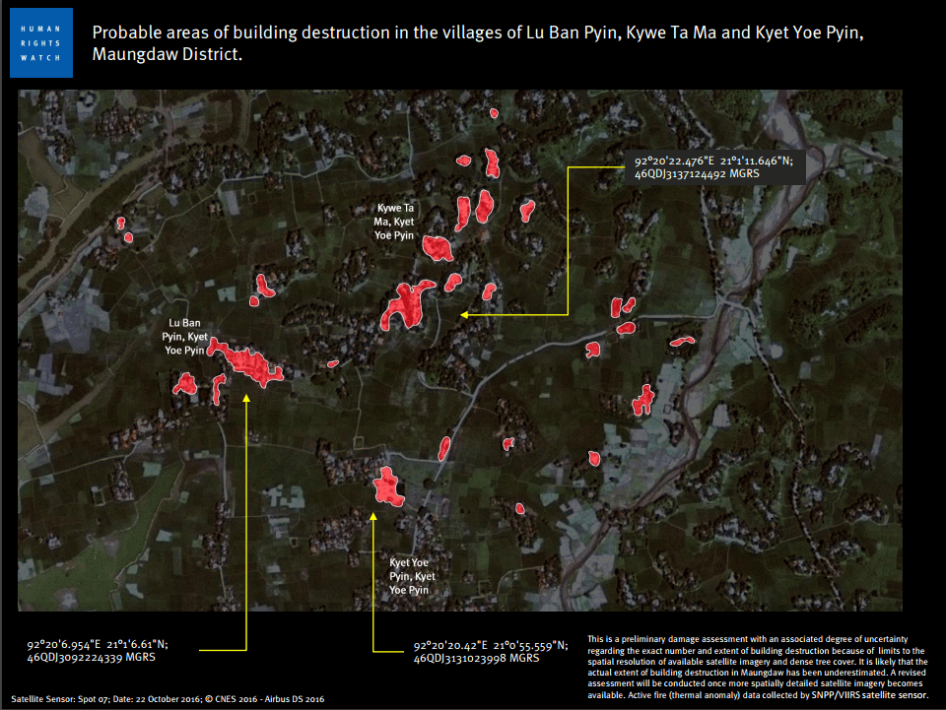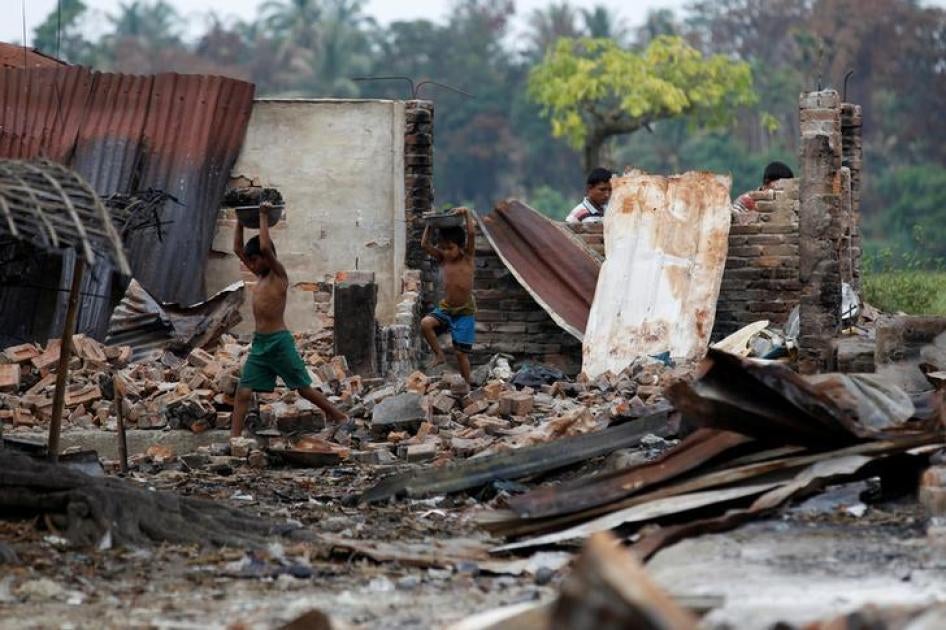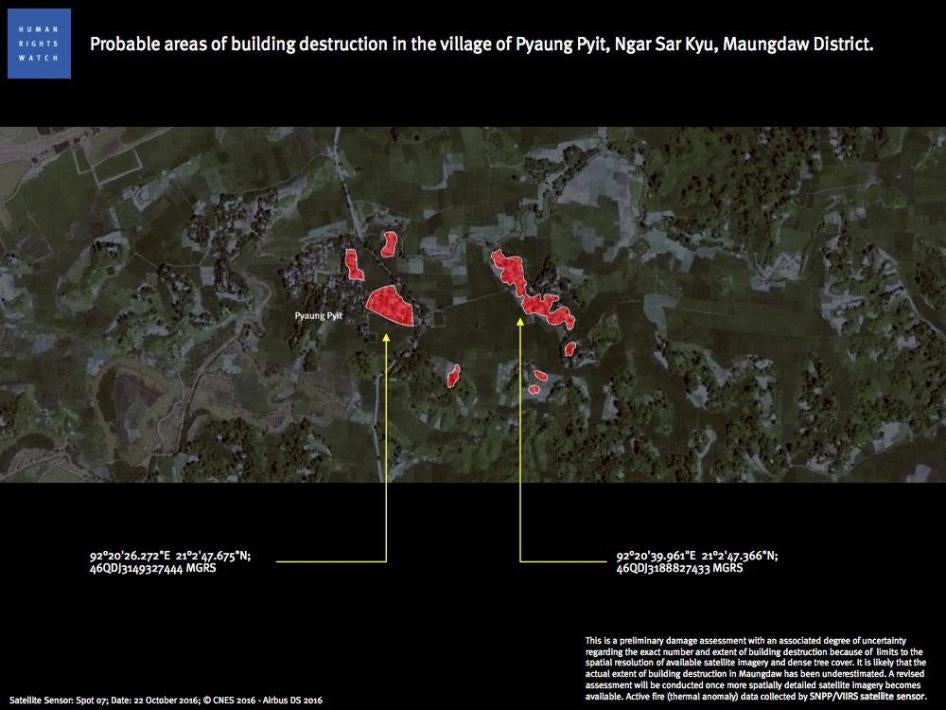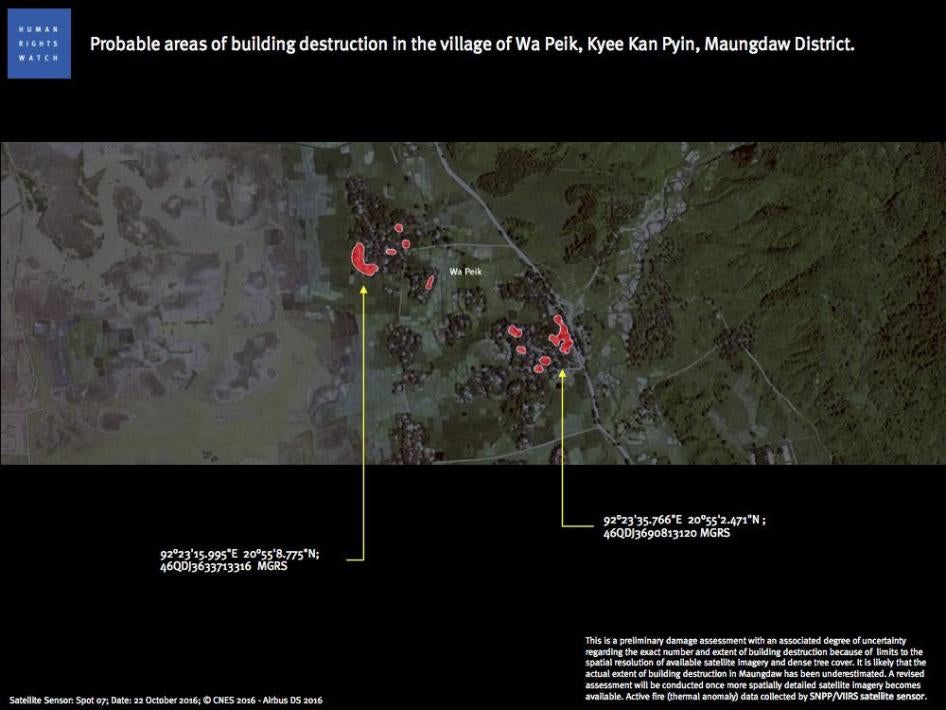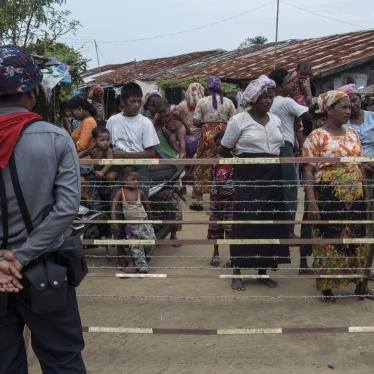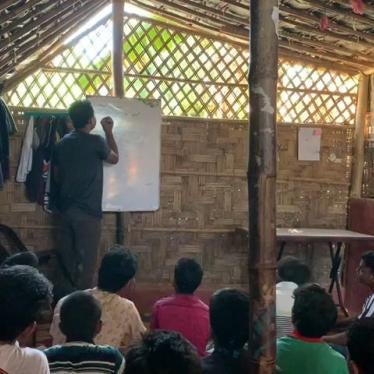(Rangoon) – New satellite imagery shows evident fire-related destruction in at least three villages in Burma's northern Rakhine State, Human Rights Watch said today. The Burmese government should urgently allow the United Nations to assist in investigating reported destruction of villages in the area. A government-chaperoned delegation of UN aid agencies and foreign diplomats is expected to visit the area on October 31, 2016, marking the first time international aid agencies have been allowed into the area since October 9, although it is unclear whether they will have full access to affected villages.
A UN-assisted investigation needs to examine the deadly attacks on border guard posts on October 9, and allegations that government security forces subsequently committed summary killings, sexual violence, arson, and other rights abuses against ethnic Rohingya villagers in Rakhine State’s Maungdaw district, Human Rights Watch said.
“New satellite images reveal destruction in Rakhine State that demands an impartial and independent investigation, something the Burmese government has yet to show it’s capable of doing,” said Phil Robertson, deputy Asia director at Human Rights Watch. “The government should end its blanket denial of wrongdoing, and blocking of aid agencies, and stop making excuses for keeping international monitors from the area.”
Human Rights Watch’s review of high-resolution satellite imagery recorded on the morning of October 22 identified multiple areas of probable building destruction in the villages of Kyet Yoe Pyin, Pyaung Pyit (Ngar Sar Kyu), and Wa Peik (Kyee Kan Pyin), in the Maungdaw district. Damage signatures visible in the imagery are consistent with the presence of large burn scars from fires in each of the villages.
On October 9, gunmen attacked three police outposts in Maungdaw township near the Bangladesh border, reportedly leaving nine police officers dead. The government said that the attackers made off with dozens of weapons and thousands of rounds of ammunition. The Burmese government asserts the attack was carried out by a Rohingya group, but actual responsibility remains unclear.
Immediately after the attacks, government forces declared Maungdaw an “operation zone” and began sweeps of the area to find the attackers and lost weapons. They severely restricted the freedom of movement of local populations and imposed extended curfews, which remain in place. Humanitarian aid groups have also been denied access, placing tens of thousands of already vulnerable people at greater risk.
Media and local rights groups have reported numerous human rights abuses against Rohingya following the attack, including extrajudicial killings, rape, torture, arbitrary arrests, and burning of homes. On October 28, Reuters published interviews with Rohingya women who allege they were raped by Burmese soldiers. Government-imposed restrictions on access to the area by journalists and human rights monitors continue to hinder impartial information gathering.
Burma’s army, known as the Tatmadaw, has a long history of abuses, including arbitrary arrest, beatings, torture, sexual abuse and rape, extrajudicial killings, and use of forced labor. Army commanders and soldiers who have committed serious abuses against civilians during operations have enjoyed almost total impunity.
Burma is obligated under international law to conduct thorough, prompt, and impartial investigations of alleged human rights violations, prosecute those responsible, and provide adequate redress for victims of violations. Standards for such investigations can be found, for example, in the UN Principles on the Effective Prevention and Investigation of Extra-legal, Arbitrary and Summary Executions, and the UN Guidance on Commissions of Inquiry and Fact-Finding Missions. Burma’s failure to conduct such investigations in the past underscores the need for UN assistance, Human Rights Watch said.
“These satellite images of village destruction could be the tip of the iceberg given the grave abuses being reported,” Robertson said. “The Burmese government has a responsibility to hold accountable both the perpetrators of the October 9 attacks against state officials, and government security forces who committed – and may still be committing – serious abuses in pursuit of those attackers.”
